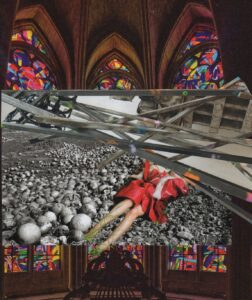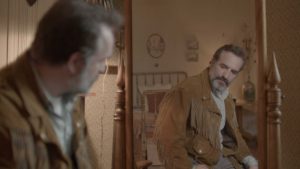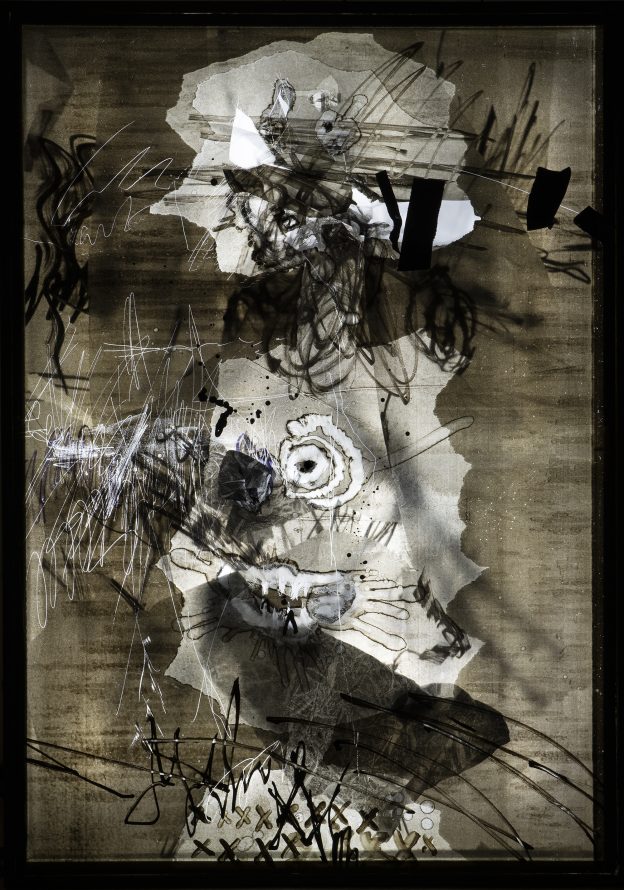
with BRITTLE SMILE
artworks by EUNJUNG SUH
“Hola,” a message I received through Instagram chat last May began. “I spent a lot of time with Leopoldo María Panero.”
This opener naturally got a response from me. Two months earlier my book about the Panero family of Spain had come out, a non-fiction saga about a mother and father and three sons, all writers, who had turned their own dramatic dissolution into a collective work of art. Leopoldo María Panero—or LMP, as ‘panerologists’ like myself refer to him—was the middle son, the most famous of the bunch (Roberto Bolaño included different versions of him in three novels), arguably the most talented, and inarguably the most transgressive.
Many of the people who knew Leopoldo María whom I interviewed said he was the most brilliant person they had ever met, though just as many said he was the most self-destructive. As a young man in the late years of the Franco dictatorship, he lived as if there were no rules, even as this was pointedly not the case, since his behavior repeatedly earned him police beatings and landed him in jail. Beyond agitating against the regime in the streets—which was perhaps self-destructive, yet entirely justifiable—he drank himself into deliriums, picked fights with friends and strangers, dropped acid for days on end, destroyed people’s apartments, lived on the street and ate garbage, lost many teeth, and tried to kill himself on at least three occasions (at home, in a hotel, and in prison). He was his own apocalypse, though from a safe distance his personal annihilation had a magnetic, even revelatory quality about it. This was in large part because of his darkly beautiful poetry, which was like an accompanying text to his outrageous behavior.
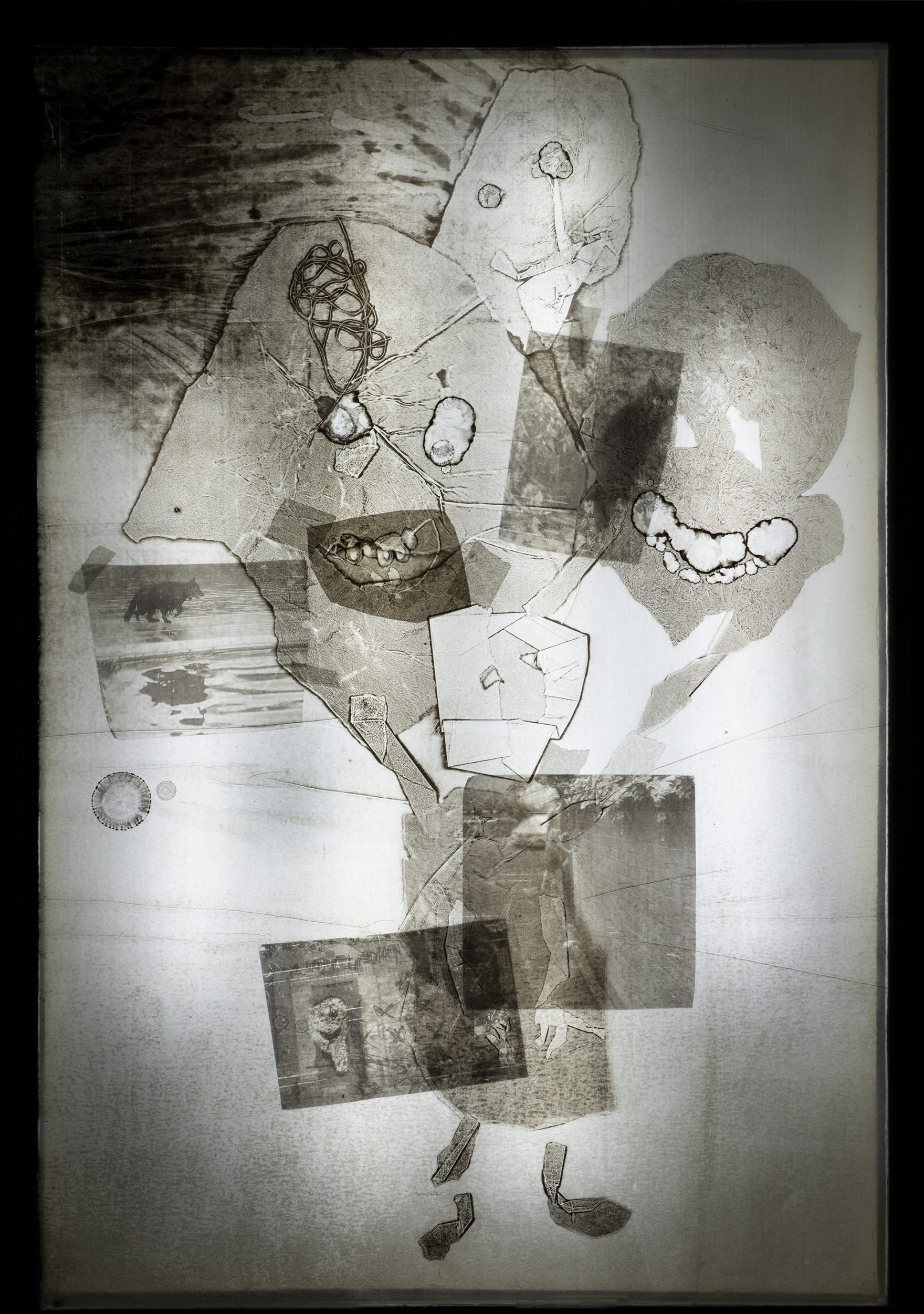
Túa Blesa, the foremost scholar on LMP’s work—and who endured more than a few unseemly incidents with his subject at literary events they attended together over the years—has called his work “a program of destruction.” In his poems he exploded powerful institutions to see what was left in their ashes. He attacked capital-F Family, for example, mixing visions of murder and incest in this poem for his mother, which he recited in her presence at a reading in 1981: “I will kill you tomorrow / . . . and it will be like sex or semen on the lips / . . . a giving of thanks.” He saw religion as an instrument of the devil that fueled savagery: “Murder was carried out in the name of God,” he wrote, “I saw how villages were exterminated, entire races for not / adoring the image of the Beast / which wears the name of God.” He poeticized schizophrenia as the only true kind of sanity available, and he even fantasized about destroying his own most valuable weapon: literature. “The cadaver of poetry,” he wrote, “is the substance of my verses.”
I had already interviewed dozens of people about Leopoldo María, and my book was out, but of course I was intrigued to hear from someone new who had known him. After I wrote back, the sender of the message introduced himself as Diego Perdomo, a teacher and writer from the Spanish Canary Islands. As a young man in the mid-‘90s, Perdomo had seen El Desencanto (The Disenchantment), the 1976 cult documentary about the brilliant and tormented Panero family, in which LMP had given a luminous and devastating performance, shattering family narratives while tossing out tattoo-worthy one-liners like, “In childhood you thrive and after that you survive,” and, “I consider failure to be the most resplendent victory.” Perdomo became obsessed with the film—the same as I did many years later, which led me to write my book—and worshipped LMP. Then, in 1999, as he described in an eloquent, eleven-page amuse-bouche of memories he emailed me after our online chat became unwieldy, “The miracle happened.”

By chance Perdomo learned that his idol had been living right under his nose in the city of Las Palmas since 1997, when Leopoldo María had moved to the Canary Islands and installed himself in a psychiatric institution there (he would spend the rest of his life there until his death in 2014). Perdomo sought him out at a poetry reading in town and they quickly became friends, though LMP didn’t really have ‘friends’ in the conventional sense. With a few other admirers in similar roles, Perdomo was a combination of audience, superfan, protégé, and volunteer attendant. They spoke on the phone and went for walks nearly every day, and he made a pact with himself to not note down the cryptic yet epigrammatic phrases LMP inevitably perforated conversations with. In other words, he tried to see his famous idol as a person, not as a living literary text, or worse, an experience.
A small, affectionate community of fan-friends took shape around LMP in Las Palmas, united by the strange figure who had brought them together. “I saw close friends and even courtships forge themselves through admiration for Leopoldo,” Perdomo recalled. The irony, of course, is how wholesome this sounds, even if LMP had a penchant for urinating in public and was prone to bouts of bitter paranoia, like stubbornly accusing Perdomo of giving him poisoned yogurt, which eventually led to the attenuation of their friendship after four years. A poet who had written chilling, memorably perverse verses as if reporting live from humanity’s hellish and inescapable destruction nonetheless was a creator of human connection for the people who thrilled to these verses. In the right musical key, apocalypse could be togetherness.
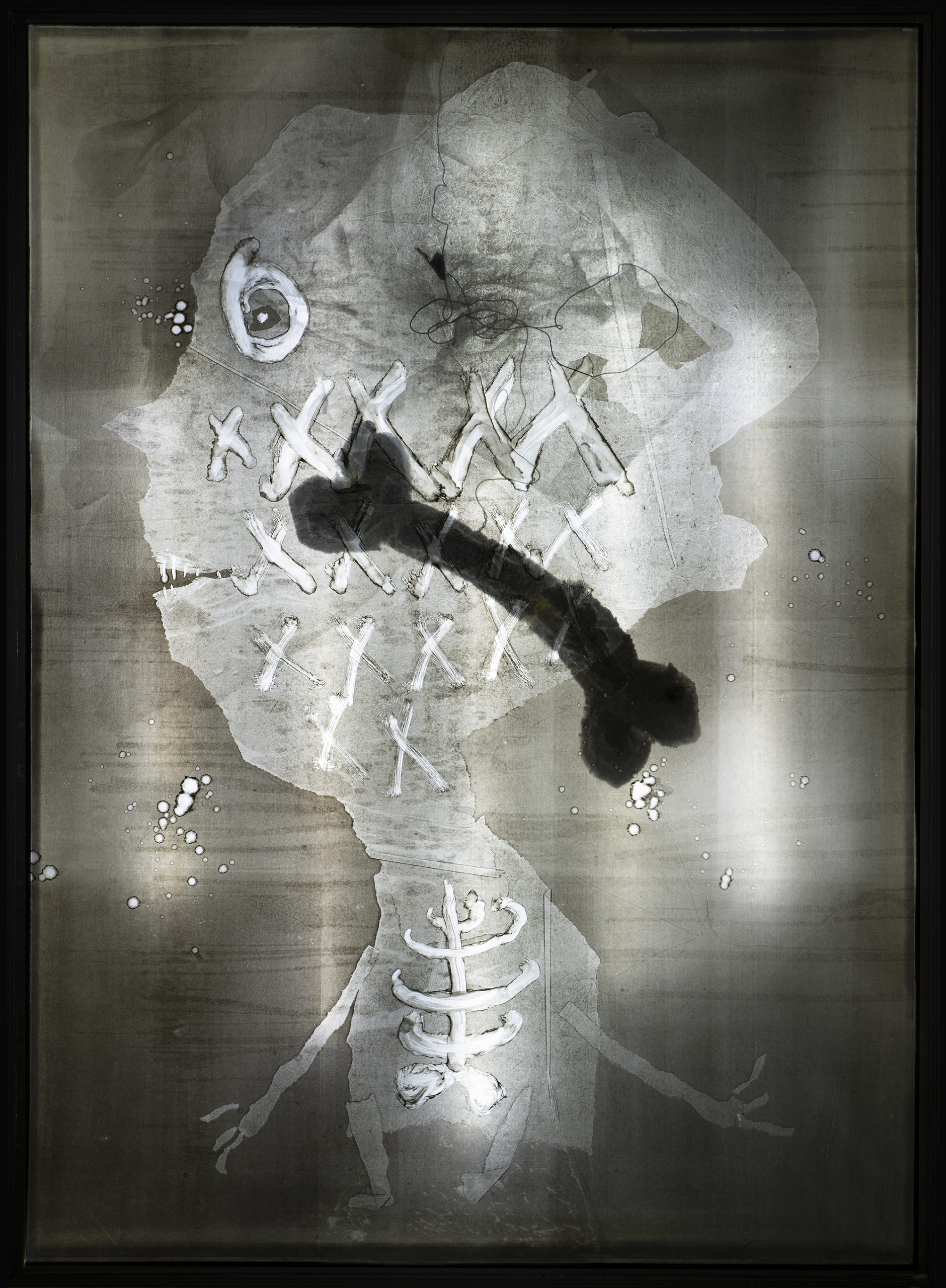
One part of Perdomo’s letter that I found myself thinking about after our exchange tapered off was about the question of when exactly LMP’s sanity had begun to slip. Over the years, countless clinicians had examined him and applied various labels to his vexing mind and performance-art-like behavior, though there seemed to be a consensus that he was schizophrenic. An area of speculation, then, for some people who knew him or read him became what had finally flipped his inner switch to mental illness. Was it when the gay writer and object of his affection Ana Maria Moix didn’t reciprocate his obsessive feelings? His stint in a Francoist prison? Or when he got into a fight in Mallorca? Perdomo told me that he had learned from an ex-lover of LMP’s that in the late 1970s the poet and some friends had taken a bad batch of acid and several had lost their minds in a way that they didn’t come back from. He had found this explanation deflating and banal, as did I. It had no shiver of revelation to it. Rather than uncover a new truth, it seemed to muddy an old one.
While LMP was a flesh-and-blood person with real joys and sorrows, and it is important to recognize his non-mythologized humanity, he had transformed his life into a metaphor with singular abandon, and he continues to be valuable as such. To reduce his lifelong set piece of both lived and literary destruction to a case of bad chemistry is to rob him of his raison d’etre: poetry, and the quixotic hope that it can change the world, or at the very least contain it. And it’s also to rob us of what he wanted to give his readers: a weapon and a refuge. He had been born under a dictatorship, and he knew that metaphors can’t be imprisoned, tortured, or killed.
What does it matter when Leopoldo María Panero supposedly lost his mind? It doesn’t.
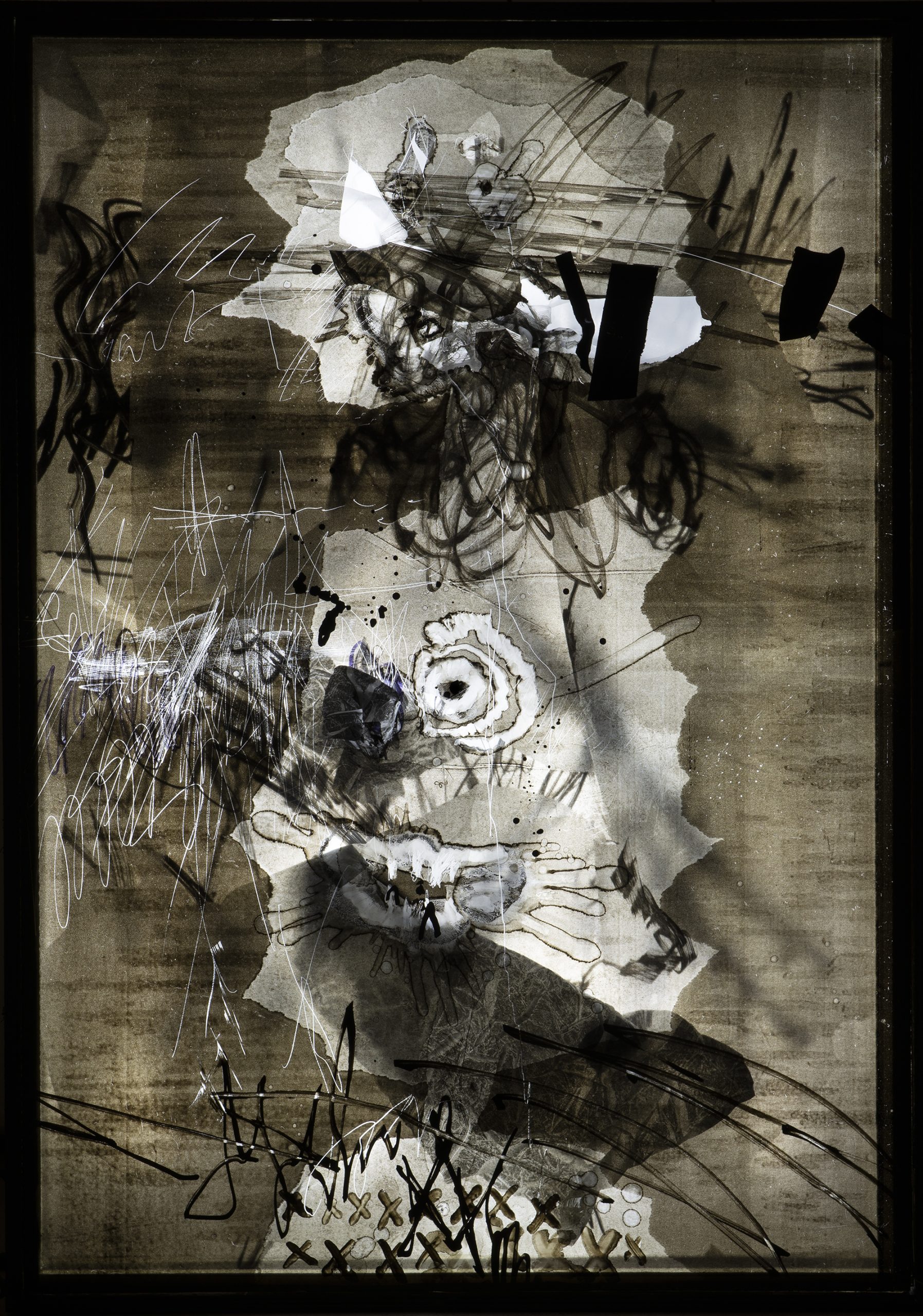
When I started writing this piece, it was early March 2020. The world was one way. Today, as I finish, it’s March 19th, 2020, and the world is completely other. Like the rest of you, I barely leave the house. I stand in mental awe of what life has become and marvel at the apocalyptic imagination not of a film or novel, but of reality. And here I find myself, writing about Leopoldo María Panero, whose poetry speaks to this current state of affairs with a resigned, tranquil sense of doom I find oddly comforting. “Nightmares are hard work,” he wrote in one poem, and in another, “We will return from burned cities / and we will be the ghosts of our own words.” LMP once wrote that suicide for him was to continue living, and for humanity as a whole that also feels true. Even after the COVID-19 crisis abates, other apocalypses will still await us. This future, surely, is the opposite of a miracle.
BRITTLE SMILE (2018)
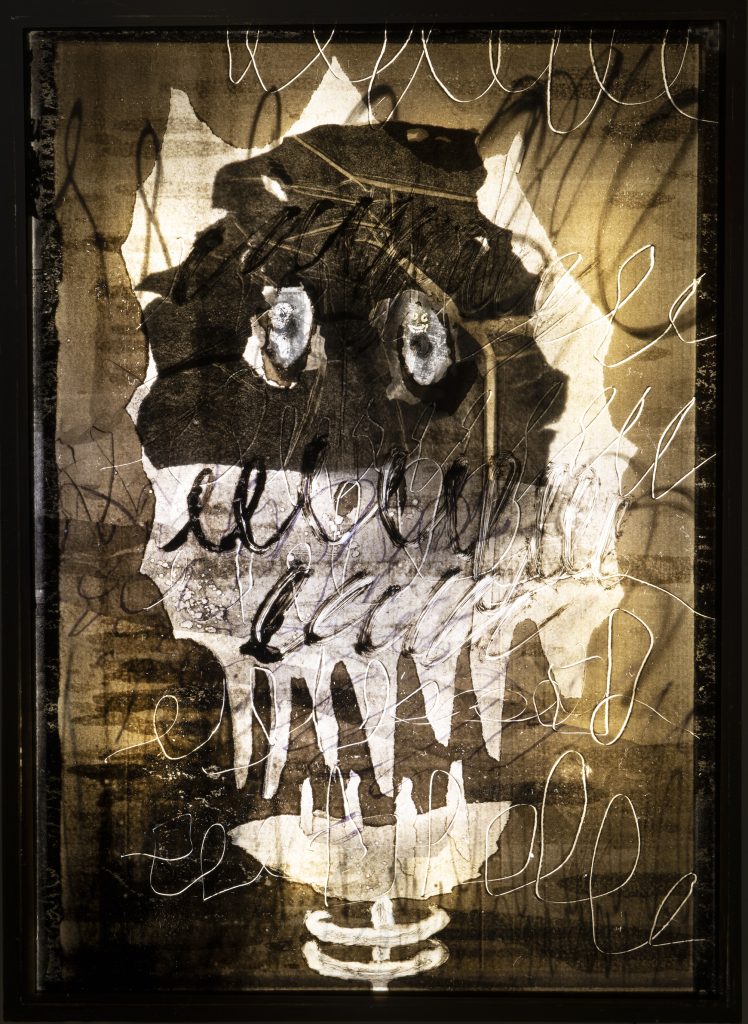
“The series BRITTLE SMILE began with my interest in the conflict that occurs between a ‘social self’ and a ‘true self.’
In the process of one’s adaptation into societies, one might tend to seek and show only bright aspects of him or herself, ignoring opposing sides of their feelings. Vulnerability, absurdity, hatred, and fear, as shadow parts of one’s mind, can be easily excluded. Social media lends itself to obsessive editing and faking of one’s life to appear brighter than it is. In turn, it becomes harder to look into one’s true or hidden natures. This can deprive one of a chance to live as who they truly are.
In the series Brittle Smile, I aimed to reflect an existence of the hidden side of the human mind under social masks and how they relate to each other. I layered different drawings and monotype prints. Under the first layer of mask-like smiling face, ever-changing psychic energy and shadow parts of mind are captured by more abstract gestures. Further, the backlights behind the layers bring both the brightness and darkness of the human mind together. Due to the different thickness and transparency of the layers, the drawings speak together as if the shadow parts of the human mind are reacting to the outer world.
Though all my works come from my private drama, they are all about universal sentiments and feelings that we need to communicate. I hope to evoke the viewer’s hidden parts through my revelations.”
AARON SHULMAN writer
Aaron Shulman is the author of The Age of Disenchantments: The Epic Story of Spain’s Most Notorious Literary Family and The Long Shadow of the Spanish Civil War (Ecco/HarperCollins, 2019). A former Fulbright scholar, his worked has appeared in The Believer, The Wall Street Journal, Hazlitt, and The New Republic, among many other places. He is the co-proprietor of Splash Literary, a collaborative editorial agency that works with authors, literary agents, and publishers.
EUNJUNG SUH artist
Eunjung Suh is a multidisciplinary artist based in South Korea. Her body of work is a constant journey to reveal shadow parts of the human mind. Unpleasant emotional experiences or encountering unexplainable impulses in her daily life are key inspirations when exploring her theme. Based on her everyday drawing, the final results often come out as ceramics, printmaking, and/or installation. Eunjung has exhibited in Paris, and at the British Ceramic Biennial in Stoke-on-Torrent, Nottingham.
The Play Had a Comedic Ending (2018) – monotype and drawing on acetate and paper, drawing on paper, paint on wood, digital print, LED light. 75.5 x 52 x 10cm
Untitled II (2018) – monotype and drawing on acetate and paper, photo etching, drawing on paper, paint on wood, digital print, LED light. 76 x 55.5 x 15cm
So Sad I Cannot Hide My Bone (2018) – monotype and drawing on acetate and paper, paint on wood, LED light and mixed media. 99 x 72 x 15 cm
A Head Above a Head (2018) – monotype and drawing on acetate and paper, drawing on paper, paint on wood, LED light. 74.5 x 53 X 10 cm
© Copyright for all texts published in Stillpoint Magazine are held by the authors thereof, and for all visual artworks by the visual artists thereof, effective from the year of publication. Stillpoint Magazine holds copyright to all additional images, branding, design and supplementary texts across stillpointmag.org as well as in additional social media profiles, digital platforms and print materials. All rights reserved.
